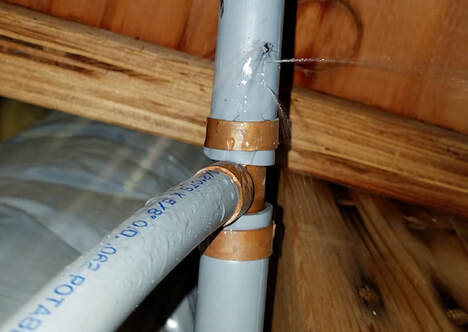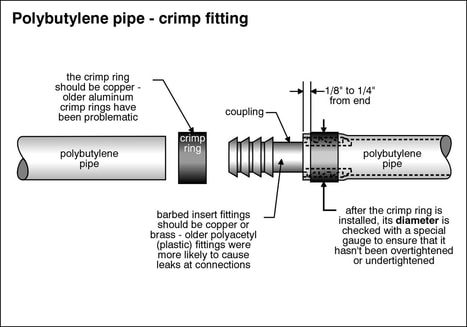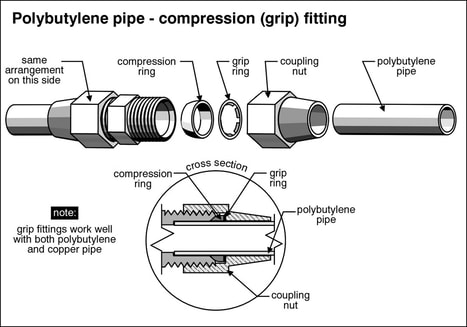|
23/2/2019 0 Comments the problem with poly-bPolybutyline (aka Poly-B or PB) water piping was used in many homes built from 1970 to the mid-1990s. Polybutylene water piping is no longer accepted by building codes and has been the subject of class action lawsuits due to problems with broken pipes and water damage. Chlorinated water causes deterioration of the internal chemical structure of polybutylene piping and the associated acetal plastic fittings. The reaction with chlorine appears to be accelerated by mechanical stress at fittings, sharp bends and kinks. In extreme cases, stress and chemical degradation can lead to perforation and leakage within just a few years, or the piping might not fail for decades.
“But the piping looks fine.” Because the chemical reaction occurs inside the pipe, it is difficult to visually assess the extent of deterioration. This problem can cause slow leaks, as well as pipes bursting without warning. The only long-term solution is to completely replace the polybutylene plumbing throughout the building. Although replacement is not mandatory it is nonetheless recommended. Poly-B pipes installed behind drywall can leak unnoticed for long periods of time, causing mold and material damage. The presence of Poly-B piping can also affect the resale value or the saleability of a home. It can be much less expensive to replace the piping before it fails. Homeowners may be faced with higher insurance premiums or denied coverage entirely. For concerned owners who wish to replace Poly-B piping in their home with copper or another material, there are companies that specialize in this type of work.
0 Comments
Leave a Reply. |
AuthorGil Strachan is a professional home inspector, representing Electrospec Home Inspection Services in east-central Ontario since 1994. CategoriesAll Appliances Buying And Selling Cooling Electrical Environmental Exterior Health And Safety Heating Home Improvement Home Inspection Insulation Insurance Interior Plumbing Roofing Special Structure Archives
January 2024
|




